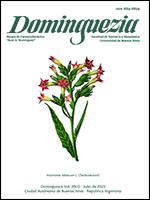Retrospective compilation of the use of plants in traditional medicine against malaria in Cuba
Keywords:
Cuba, malaria, ethnobotanical, medicinal plantsAbstract
Plants used in traditional medicine are explored internationally as valuable sources of new antimalarial agents. Aim. To identify plant species with potential antimalarial activity based on previous ethnobotanical research in Cuba. Methods. Cuban ethnobotanical documents were analyzed looking for the plant species used against malaria, against intermittent fevers and those plants used as substitutes for Cinchona in order to register: scientific names of the plants and families, common names, origins, geographical distribution, general biogeography, growth form, used parts, methods of preparation, Cuban localities where the use was informed and bibliographic references. Results. This search revealed the use of 63 plant species. The species belong to 36 families distributed in 58 genera. The most represented family was Asteraceae with six species. Native species represent 50.8 %. Baccharis halimifolia L. var. angustior (DC) Herrera, Picramnia reticulata Griseb., Chione venosa (Sw.) Urb. var. cubensis (A. Rich) D. W. Taylor and Cusparia ossana (DC) Beurton are endemics. Most of the species (63.5 %) are cultivable. The parts of the plants most used were the leaves (34.9 %), the bark of the stem (30.2 %) and the roots (28.6 %) and the decoction was the most frequent way of preparation. Citrus x aurantiifolia (Christm.) Swing., Parthenium hysterophorus L., Teucrium cubense Jacq. and Picramnia pentandra Sw. represented the most cited species. Most of the plants were referred for the treatment of malaria (60.3 %). Conclusions. The information compiled stimulates the further scientific exploration of antimalarial activity, bioactive compounds and toxicological profiles in a group of plants originating mostly in America and the Caribbean and largely cultivable.



